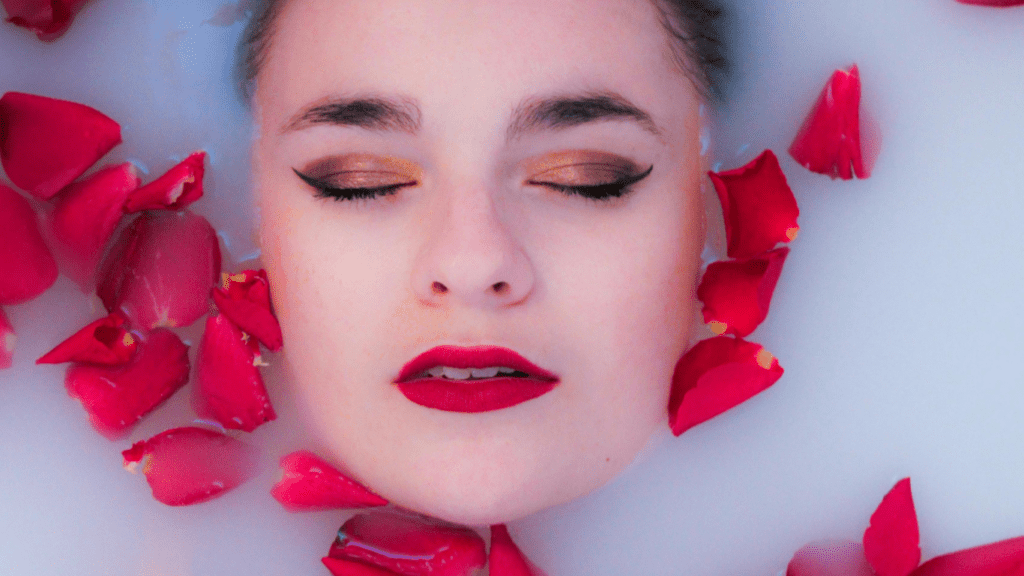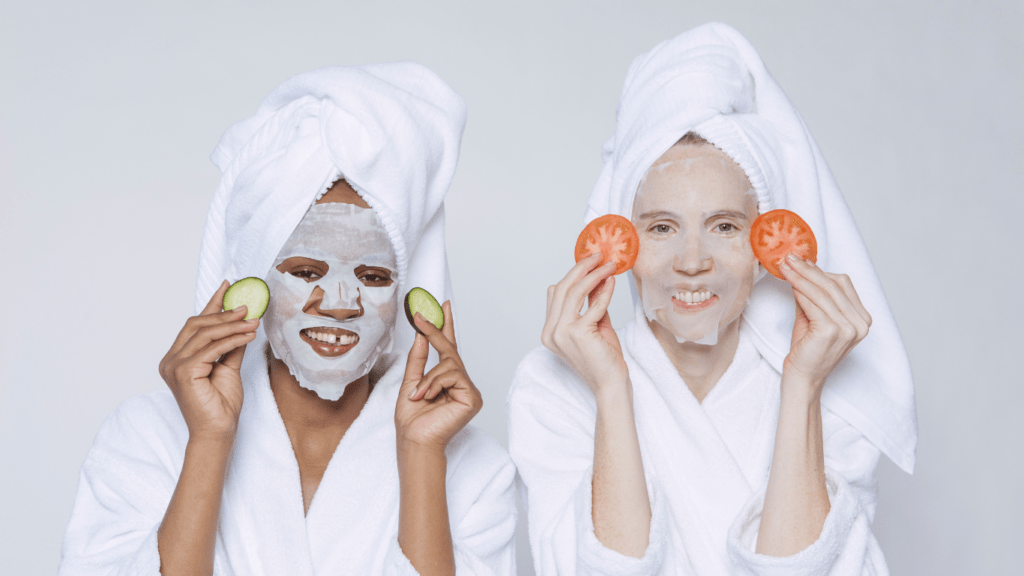Ancient Egyptian Beauty Rituals
Ancient Egyptian women used natural ingredients to maintain flawless skin and striking appearances. They relied on time-tested rituals supported by local resources.
Milk Baths and Honey Facials
Cleopatra popularized milk baths, enhancing skin softness and clearness. Lactic acid in milk gently exfoliates, removing dead cells and revealing fresh skin. Honey, with its antibacterial properties, was combined in facials to hydrate and heal the skin. Together, these ingredients created powerful skincare treatments.
Kohl for Eye Makeup
Egyptians used kohl for their iconic eye makeup. Kohl, made from galena and other minerals, provided dramatic eyeliner while protecting eyes from the harsh sun. Both men and women wore kohl, and it also had medicinal benefits by reducing eye infections. This combination of functionality and aesthetics made kohl an integral part of Egyptian beauty routines.
Traditional Indian Beauty Secrets
Indian beauty routines harness nature’s power. These practices have historical and cultural roots, with remedies often focusing on simple, naturally sourced ingredients.
Turmeric Masks
Turmeric has been a staple in Indian skincare for centuries. Its active compound, curcumin, has anti-inflammatory and antioxidant properties. I mix turmeric powder with yogurt or honey to create a natural mask. This combination helps brighten skin and reduce acne. Brides in India often use turmeric masks before weddings for a glowing complexion.
Coconut Oil Hair Treatments
Coconut oil is renowned for promoting healthy hair in India. It’s rich in fatty acids, helping to nourish and moisturize the scalp. I warm coconut oil slightly and massage it into my scalp and hair. This treatment can combat dandruff, promote hair growth, and add a lustrous shine. Regular use strengthens hair, reducing breakage and split ends.
Japanese Skincare Techniques
Japanese skincare techniques offer a blend of traditional and modern methods, emphasizing natural ingredients and consistent routines for clear, radiant skin. These practices have been honed over centuries, reflecting Japan’s deep respect for nature and holistic wellbeing.
Rice Water for Skin
- Japanese women have used rice water for centuries to achieve smooth, luminous skin.
- Rice water, rich in vitamins and minerals, helps improve skin’s texture and clarity.
- Soak half a cup of rice in two cups of water for 30 minutes, then strain the water into a clean container.
- Applying this starchy liquid to my face using a cotton pad twice a day helps.
- It reduces the appearance of pores and brightens my complexion.
- Studies highlight rice water’s ability to improve skin barrier function and reduce irritation (Kusunoki et al., 2018).
Green Tea Facials
Green tea is a staple in Japanese skincare due to its high antioxidant content. These antioxidants combat free radicals, reducing signs of aging. I brew a strong cup of green tea and let it cool, then mix it with a tablespoon of honey for added hydration. Applying this mixture as a mask for 15 minutes once a week revitalizes my skin. Research shows green tea’s polyphenols can reduce sebum production and inflammation (Fujimoto et al., 2016). This makes it ideal for maintaining clear, youthful skin.
Korean Beauty Practices

Korean women are known for their glowing, youthful skin. Their beauty secrets revolve around innovative products and age-old traditions.
Snail Mucin Products
Snail mucin is widely used in Korean skincare for its regenerative properties. Extracted from snails, this ingredient helps repair skin, diminish acne scars, and improve elasticity. I found that mucin serums, creams, and sheet masks provide remarkable hydration.
Sheet Masks
Sheet masks are a staple in Korean beauty routines. Infused with various serums, these masks address different skin concerns like:
- dryness
- dullness
- acne
I use sheet masks two to three times a week for an instant moisture boost and improved skin texture. For maximum benefits, it’s best to leave the mask on for 15-20 minutes and gently pat the remaining serum into the skin.
By incorporating these practices, I’ve noticed significant improvements in my skin’s overall health and appearance, reflecting the efficacy of Korean beauty wisdom.
Mediterranean Beauty Remedies
Mediterranean beauty remedies incorporate natural ingredients known for their efficacy and availability in the region. These age-old practices offer holistic solutions for skin and hair care.
Olive Oil Treatments
Olive oil, a staple in Mediterranean diets, also boasts impressive beauty benefits. Rich in antioxidants and healthy fats, it’s been used for moisturizing skin and hair for centuries. I apply extra virgin olive oil to my face nightly to achieve deep hydration and a natural glow. It works well as a makeup remover too.
Sea Salt Scrubs
Sea salt, abundant in mineral-rich Mediterranean waters, offers excellent exfoliation properties. It sloughs off dead skin cells and improves circulation, leaving skin smooth and revitalized. I mix sea salt with olive oil to create an effective homemade scrub, applying it gently to my body once a week. This practice has significantly enhanced my skin’s texture and brightness.
South American Beauty Tips
South American beauty rituals are deeply rooted in indigenous practices that harness the power of natural ingredients available in the region. These remedies focus on achieving radiant skin and healthy hair through organic and easily accessible means.
Avocado Masks
Avocado, rich in vitamins E and K, is a staple in South American beauty for its moisturizing properties. To create an avocado mask, I mash one ripe avocado and mix it with a tablespoon of honey. This combination provides hydration and leaves skin soft and supple. Regular use can help reduce the appearance of fine lines and improve skin elasticity. The fatty acids in avocado penetrate deeply, making it ideal for dry or mature skin.
Aloe Vera Applications
Aloe vera, often referred to as the “plant of immortality,” has been used in South America for centuries for its healing and soothing properties. I extract fresh aloe gel from the plant and apply it directly to my skin to calm irritation and reduce redness. Aloe vera is packed with vitamins A, C, and E, which promote healthy skin and aid in faster wound healing. For hair care, I mix aloe vera gel with coconut oil and use it as a conditioning treatment to enhance shine and reduce scalp dryness.



